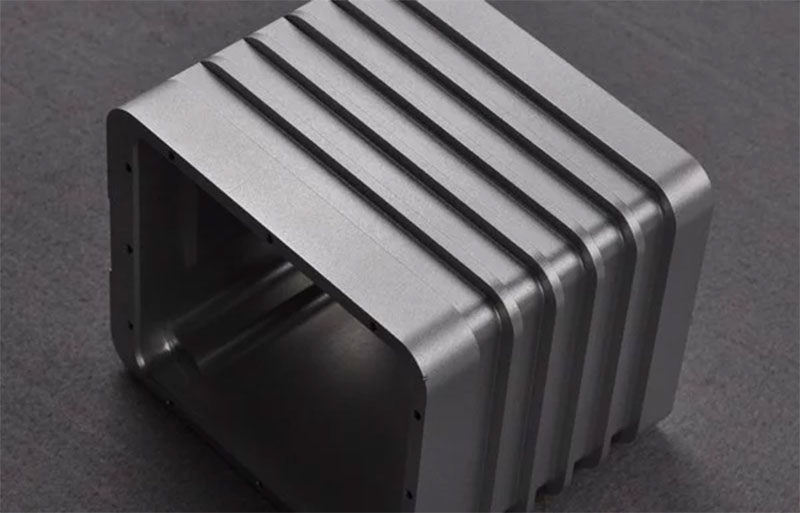1 As Machined
As-machined finish refers to the surface appearance of machined parts as soon as the manufacturing process is finished. The parts often have surface defects, such as tiny tool marks. Machined parts with an as-machined finish have a 3.2µm average surface roughness.
Please note, that post-processing techniques like smoothing and polishing can compromise the machined surface’s dimensional tolerances.

2 Bead Blasting
This popular and cost-effective CNC metal finishing provides a satin or matte surface finish for parts that don’t require a glossy finish. Bead blasting involves bombarding the surface of CNC parts with millions of tiny glass beads through a pressurized air gun in a closed chamber to eliminate defects and imperfections.
3 Brushing
It is a precision surface finishing method that creates a uniform, directional texture on the surface of CNC parts using fine bristles or abrasive media. Brushing finish is particularly suitable for highlighting the natural luster of aluminum, copper, and stainless steel parts without necessarily giving them a high polishing gloss.
4 Sand Blasting
Sand or abrasive blasting is a mechanical finishing that cleans, smoothens, or shapes parts’ surfaces by propelling abrasive media such as sand at high velocity against it. It is suitable for removing contaminants, adding patterns, or preparing the surface for painting or coating.
5 Polishing
Polishing is a mechanical CNC machining surface finishing involving the use of abrasives or polishing compounds to achieve a high-gloss reflective finish on the surface of different parts. Machinists use rotary tools like polishing wheels or pads during the polishing process. Product designers often polish medical parts, food processing components, and luxury items because they offer aesthetic, protective, and functional benefits.
6 Knurling
This custom surface finishing creates a patterned texture on the CNC metal part’s surface by pressing a patterned tool against the surface of the rotating workpiece. The knurling process creates a tightly controlled and uniform pattern for better appearance or grip enhancement in metal parts, including brass, steel, and aluminum.
7 Grinding
This machined surface finish involves using an abrasive wheel to rid the surface of machined parts of additional material. It provides a uniform and smoother finish, particularly in materials that accumulate high amounts of contaminants.
